Landing Page for PPC — 15 Things That You Need to Know
Disclosure: We may use affiliate links which means that, at zero cost to you, we may earn a commission if you buy something through our links.
As cited by numerous marketing studies, paid advertising solutions like PPC (Pay-per-Click) have the potential to bring in approximately 50% more lead conversions compared to organic search results. Of course, that statistic only applies to marketers who are doing it right and much of it has to do with designing a good landing page for PPC.
Indeed a landing page can make or break a PPC campaign. Where so many marketers tend to get it wrong is that they hardly give the process any thought and attempt to cut corners by using PPC landing page templates. It’s crucial to design a landing page that provides a positive experience for users. Only then can you expect to see an improvement across the board — low bounce rates, high ad scores (higher quality scores and low cost per click) and more conversions. All these metrics are attainable but only with a good landing page design that helps lower ad expenses and maximizes ROI (return on investment).
So how do you design a good landing page for PPC? In this article, we’ll go over how you can do just that as we go over crucial elements of an effective and profitable landing page for your PCC advertising campaign:
- Page Relevance
- Unique Selling Point
- Demonstrating what your product or service can do for customers
- Educating leads
- Mobile-friendly landing pages
- Keep it simple
- Setting a clear Call-to-Action (CTO)
- Eliminate Distractions
- Transparent Policies
- Social Proof
- Landing page loading speed
- Engagement
- Voice search optimization
- Social media
- Continuous testing
- Conclusion
#1 Page Relevance
Where so many marketers tend to get it wrong when delving into PPC is that they post an ad that tells people one thing but then redirects to a landing page that says something different. For instance, your ad might promise something like “a free guide to getting rid of acne forever”, but then on the landing page, you’re asking people to pay for it. As you might imagine, that would be the worst place to start with your PPC landing UX (user experience).
While baiting people with outrageous and “too good to be true” offers is an easy way to land more clicks to your landing pages, keep in mind that the only time these clicks are worth anything is when (and if) they convert. That would be difficult (if not impossible) to do with leads who felt that they were misled into clicking your ad.
Simply put, any inconsistency between your PPC ads and landing page will only deter leads and cause you to miss out on precious conversions. Hence, it makes sense to focus on creating landing pages that are relevant and provides precisely what was promised in the ad.
#2 Unique Selling Point
Of course, you’ll still need to draw in leads somehow, and you don’t have to mislead people to do it. The better approach would be to put your best foot forward by identifying and highlighting your unique selling point. Every business has one; something that sets your business apart from others. If you’re unsure, you can look at some Google Adwords landing page examples for inspiration.
Every product or service is geared towards solving a specific problem. By leverage your unique selling point, you’re sending a strong message that you should be the people that they talk to.
To cite an example, let’s say that you are a web design agency that prides itself in always turning in projects on time and never taking money from clients until they’re delighted. If so, then these are elements that you’d want to incorporate into your landing page.
#3 Demonstrating what your product or service can do for customers
Now comes the hard part — demonstrating what your product or service can do should your prospects decide to buy them. As you might imagine, this can be difficult to do on a landing page. Still, people are visual creatures, and if your prospects can see a glimpse of what you have to offer, then you can very well succeed in piquing their interest.
You can use the following medium to demonstrate your offers:
- Pictures
- Animations
- Infographic
- Demonstration videos
Any of the mediums mentioned above will allow you to provide a glimpse of what your product or service has to offer. More importantly, they can be used to dispel doubts and address common questions about your product or service.
#4 Educating leads
PPC has now become extremely competitive, and with limited advertising space, marketers need to be able to get their marketing messages across as effectively and concisely as possible. This applies specifically to your ad and landing page for PPC.
Avoid any fluffy content on your landing page and focus on providing information that your prospects absolutely needs to know about your product or service. This includes the benefits, pricing, contact information, social media channels and the like.
Creating an effective landing page for PPC requires that you make an effort not to squander the interest of your prospects. In doing so, your landing page would appear more credible and more likely for prospects to do business with.
#5 Mobile-friendly landing pages
In a 2020 study by Statista (a statistics and market research institute), they found that since 2017, more than 50% of website visits are generated from mobile devices. That accounts for more than half of your leads. Hence, it makes sense to build local PPC landing pages that cater to providing a good experience for mobile users. This includes (among other things) making sure that landing pages are mobile-friendly and easy to navigate. All crucial landing page elements must be present and easily accessible on mobile devices.
So how do you go about creating an effective landing page for PPC that is mobile-friendly? Well, you can start with the following:
- Make use of optimized images. Reducing the size of pictures will make it easier to load on mobile devices.
- Minimize steps that would require users to type anything out anything on their mobile device. Such actions break off the engagement and make things more complicated for users.
- Avoid any actions that might annoy users, such as automatically downloading files and playing videos.
- Don’t use animations such as gifs unless absolutely necessary. These elements increase loading times and hurt the experience for mobile users.
#6 Keep it simple
Creating an effective landing page for PPC might seem like a complicated process, but it doesn’t have to be. A good rule of thumb when building landing pages is to make things as simple as possible. Use simple words in your ad copy and get straight to the point. The headlines must be clear and communicate instantly what your landing page is all about. That includes, among other things, setting a clear call-to-action that says precisely what you want users to do.
As for the landing page design, it would be best to take the minimalist approach. That means leaving ample space to highlight important information that you want prospects to focus on. Use as few colours as possible to maximize readability.
There’s no better way to get our point across than to cite an example. Check out the landing page above. Now ask yourself — is a landing page like that doing well in terms of engagement and conversions? Probably not.
#7 Setting a clear Call-to-Action (CTO)
Perhaps the most essential part of creating a landing page for PPC is an effective CTO — one that is compelling enough to spur leads into taking the desired action. In a study by Hubspot ( a marketing software company), they found that the right CTA can increase conversions by more than 200%.
If CTAs are that powerful, then surely having more of them is better right? Well, not exactly — one thing that you may have noticed about the landing page above is that it has too many calls-to-action; find out more, register, request valuation, etc. This just confuses users as it’s not immediately clear what they should do next.
When it comes to creating an effective landing page for PPC, it’s better to stick to one highly targeted CTA at the bottom of the page to guide user action. Some marketers have been able to get away with two (at the top of the page). In any case, you would want to make sure that your CTAs don’t detract users from the goal you’ve set for your landing page.
Of course, it also matters how you phrase your call-to-action. Generic sounding ones like “Click here” or “Submit” aren’t going to cut it. You can’t rely on a landing page builder to do this for you. Instead, marketers would want to strive to create CTAs that are as compelling as possible.
#8 Eliminate Distractions
Distractions on a landing page can come from anywhere and aren’t just limited to CTAs. This includes unnecessary links, images, videos and anything else that might detract users from reaching your goal. Again, that’s why it’s so important to focus on one or two CTA per landing page.
The same goes for the goal you’ve set when creating a landing page for PPC. Don’t attempt to accomplish more than two things at once (e.g. obtain a sale, download an app, subscribe to a mailing list, etc.). Doing so only weakens the message and give people a reason to click away from your landing page.
#9 Transparent Policies
People have grown more concerned about their privacy online and the amount of information that marketers have been collecting. This is hardly surprising considering recent cases of data intrusion perpetrated by big names like Yahoo, Facebook, and even Google.
As a result, laws like the GDPR (General Data Protection Regulation) have been passed, which aim to protect the privacy of users around the world. Nowadays, marketers need to be transparent with how and why they’re collecting information from consumers. If people aren’t able to trust you with their personal information, then how can you expect them to buy anything from you? It’s that simple.
So how do you get leads to trust you with their personal information? Well, you can start by implementing the following on your interactive landing page:
- Publish a privacy policy that explains how you collect and use data from your customers
- Create a page for frequently asked questions (FAQs) to address common concerns about your product or service
- Publish a “Terms and Conditions” page that details your responsibility to users
- Set up a toolbar that informs users that you’re collecting information on their site activity through cookies
#10 Social Proof
If you’ve been in business for quite some time, then surely you’ve had three or more customers who were extremely happy with your product or service. Then why not leverage these connections and try to get others to buy into your offers?
Showcasing positive reviews on your landing page will show leads that there have been people who’ve bought into your product or service and are happy with it. In many cases, this fact alone can swing purchase decisions into your favour.
If possible, try to get customer feedback on video as it will be much more engaging and compelling for prospects which will surely help with conversions.
#11 Landing page loading speed
Perhaps the most overlooked factor for creating an effective landing page for PPC is loading speed. After all, it’s no fun waiting for more than a few seconds for a webpage to load and more so if you’re using a mobile device.
In a related study bu Kissmetrics (a customer engagement automation company), they found that 40% of users abandon webpages that take more than 3 seconds to load. Every second beyond that can lead to a 7% loss in conversion.
So how do you go about making your Google landing page website load faster? Well, here are a couple of things that you can start implementing on your landing page for PPC:
- Use compressions and reduce the file size of assets that you’re using on your landing page. This includes pictures, videos, animations, etc.
- If possible, avoid using redirects on your landing page as it will only increase loading time.
- Sign up for a content distribution network service (CDN) which will help users access your landing page content as rapidly as possible.
- Avoid running scripts on your server and set everything to run on the client-side. This means running all scripts for your landing page on the user’s device (through the browser) which is faster than doing it on the server,
- If possible, reduce the codes that you’re using for your landing page. This included your Javascript, HTML and CSS files.
- Enable AMP (Accelerated Mobile Pages) which are stripped-down versions of your landing page. This means fasters loading time which has now become a crucial factor in Google’s ranking algorithm.
#12 Engagement
Make your landing page for PPC more engaging for users. We know that sounds awfully vague, but it’s essential to understand that your brand is just one of the many options available to prospects. You would want to do whatever you can to attract new leads and turn them into paying customers. This means making full use of whatever resources and tools are available to you with the goal of engaging prospects in a manner that’s helpful and meaningful.
For example, you can set up a live chatbot feature to assist prospects who may have questions or concerns about your product or service. If possible, you can also offer personalized sales pages and discounts based on information that you’ve collected from your leads — demographic information and the specific product or service that they’ve been eyeing on your landing page.
All the time and effort you spend towards making your landing page for PPC more engaging to users will ultimately be worthwhile. For one thing, it makes your brand stand out from other landing pages offering similar products or services. This means that they are more likely to keep your brand in mind as they finalize their purchase decisions.
#13 Voice search optimization
Most marketers haven’t even heard of voice search optimization, which is unfortunate as it’s quickly turning out as the next big thing in the web marketing industry. This is hardly surprising considering the massive improvements in voice search technology over the years. Today, voice-enabled virtual assistants like Siri, Alexa, Cortana are all racing to dominate the voice search industry and for a good reason.
In a 2019 study by Statista, they found that about 42% of Internet users around the world use voice search and that figure is bound to soar even higher in the years to come. Hence it is safe to say that voice search will soon change the way we market products or services on the Internet.
So how do you get ahead of the curve and optimize your landing page for PPC in terms of voice search? While it might sound complicated, all that you really need to do is focus on the intent of users. You may have already noticed that voice search is used differently from typical text-based queries. For one thing, most people use voice search to get quick answers to specific types of questions such as:
- Where a business located and operating hours
- How much does a product or service cost?
- Does a specific brand offer a particular product or service?
Brainstorm questions similar to the ones mentioned above and provide the answers on your landing page. The better you address these questions, the more likely that Google will recognize it and put your landing page in front of pertinent voice search queries.
Other ways to optimize your landing page for voice search:
Prioritize long-tail keywords ( 4+ keywords) for your landing page content for these are the terms people often use in voice search queries. Also, targeting these types of keywords in your PPC campaign is generally much cheaper compared to targeting short-tail keywords.
Don’t forget to use the schema mark-up for your landing page. This will make it easier for Google to crawl the content of your site and return them as search results for relevant voice queries.
#14 Leverage social media
There’s no denying that social media have become an integral part of people’s lives, so why not take advantage of it? Users might want to share your landing page on their social networks or flex about the products or services they’ve bought from you. In any case, you can make it easier for them to do so by populating your landing page with sharing links to popular social networks like Facebook, Twitter or LinkedIn.
If you currently don’t have these links on your landing page, then ask yourself — why not? It’s free advertising, and at the same time, you’d be able to expand your reach on social networks which more of your prospects might frequent and at no additional cost.
#15 Continuous testing
So many newbie marketers tend to get lured into spending a significant amount of money creating a landing page for PPC thinking that it’s something that they can set up once and that they can just sit back and wait for the sales to come in. Unfortunately, this is not the case at all. If you want to create an effective landing page for PPC, then you’ll have to spend an enormous amount of time tracking performance through an analytics tool and implementing changes on your landing page.
The idea is to come up with the best and most profitable version of your landing page, and this is only possible with continuous split testing. Set up two or three versions of your landing page with different headlines, pictures, CTAs, ad copy, etc. Run these versions simultaneously over a period of time, then try to see which one generates the most conversions. Set up another version of that landing page and repeat the process.
When split testing, be careful not to change too many landing page elements at once. Focus on one or two aspects at a time may it be the headline, images or a better CTA, then track the results. Afterwards, you can work on a different page element for the next cycle and so on. Over time, you are bound to end up with a highly optimized and profitable version of your landing page that yield fantastic returns on your investment.
Conclusion
So there you have it — everything that you need to know about creating an effective landing page for PPC! As you may have already realized, it’s a long and arduous process, but one that is ultimately necessary if your brand is to thrive in an increasingly competitive industry.
Take the elements mentioned above to heart as you work on your landing page strategy. Only then can you expect a profitable return on investment from your PPC campaign.


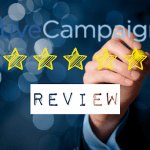
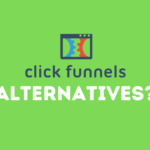

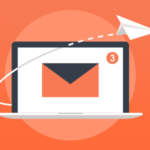
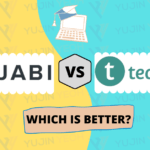
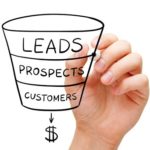



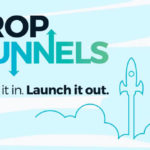


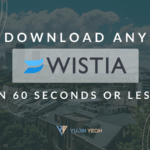
June 2, 2020
May 19, 2020